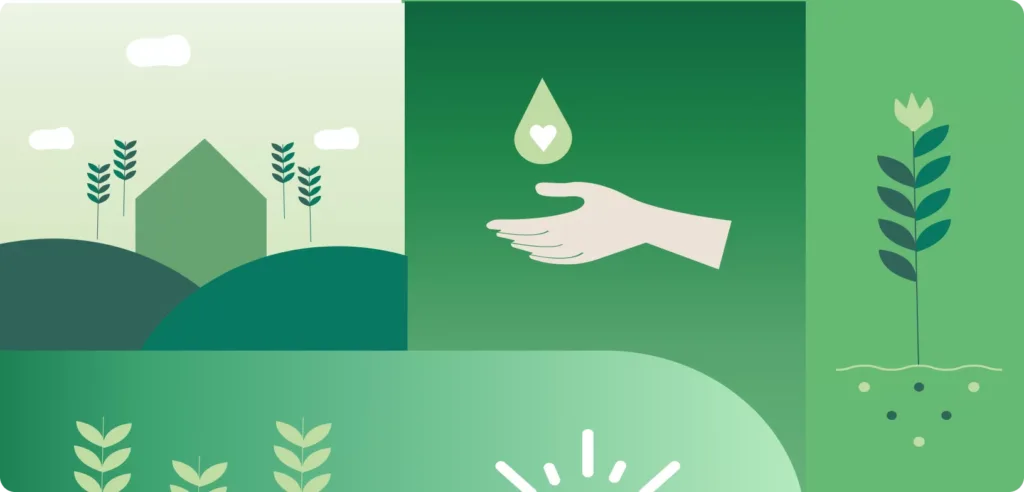Sustainable UX focuses on designing digital products with an emphasis on environmental and human-centered principles, going beyond traditional user-centered design. 11 Key Principles of Sustainable UX Design guide this approach, helping to integrate sustainability into the design and development processes to create eco-friendly digital products.

11 Key Principles of Sustainable UX Design
1. Design for ecosystems, not just individual users.
We often design services, apps, and websites with a strong focus on user needs and business goals, but this can overlook the broader impacts. Every product exists within a larger systemic context, affecting both human and non-human actors. To create truly impactful designs, we must consider and evaluate our work within this wider context, not just for the users.
2. Recognize the potential negative impacts
To design more sustainably, we must grasp the negative impacts of our products and how they relate to user and business needs. For instance, what is the carbon footprint and where does it arise? Who else bears the cost of user convenience? Which stages of the user journey have the highest negative impacts?
3. Design for every aspect of sustainability
Sustainability is frequently linked to CO2 emissions, but it encompasses many other factors. Our designs should also consider social justice, health, all living beings, and sustainable consumption. For guidance, refer to the UN Sustainable Development Goals.
4. Design for a lower carbon footprint
A website with 2.5 million monthly visitors can produce significant CO2 emissions from data provision, transmission, and display. Our design decisions directly affect the amount of data needed. By carefully selecting fonts, colors, images, and content, and optimizing image formats, we can reduce data transmission and make our design more eco-friendly, thereby lowering its carbon footprint.
5. Design for Equity
Digital products can often reinforce existing injustices. For example, older adults may struggle with digital services due to limited access or knowledge, while gender biases may arise from designs that reflect predominantly male perspectives. Additionally, social injustices are frequently embedded in digital services. To avoid perpetuating or introducing new inequalities, we must rigorously evaluate our digital designs for fairness and inclusivity at all levels.
6. Design for Well-Being and Fairness
We frequently design digital products with a user-centered approach, but ultimately to serve other stakeholders’ goals, such as maximizing user engagement or sales. Features like ‘Infinite Scrolling’ or excessive upselling often prioritize business interests over user welfare. We need to design digital products that genuinely prioritize user well-being and fairness, rather than exploiting users for other objectives.
7. Design for sustainable Users
When offering users choices, we should consider which option is the most sustainable and set that as the default. For example, some e-commerce sites now make delivery to a local hub (like a parcel shop) the standard option, requiring users to opt for home delivery if desired. This approach reduces delivery trips, lowers carbon emissions (even from electric vehicles), and enhances working conditions for delivery drivers.
8. Address the Right Problems
As UX designers, we excel at analyzing and solving problems, but it’s crucial to focus on the right issues and sustainable solutions. For example, carbon offsets are often less effective than believed—up to 90% of tree-planting offsets may be ineffective, according to the Guardian. Instead of adding a carbon offset feature to our products, we should concentrate on reducing users’ overall energy consumption and promoting more sustainable choices.
9. Design for Minimalism
Our motto should be “a little less of everything.” This means reducing videos, images, and visual clutter, minimizing content and data storage, and lowering overall consumption. Small reductions in these areas can accumulate to create a significant impact. As designers, we have the power and responsibility to influence many of these aspects directly.
10. Set Sustainability as the Default
Sustainability shouldn’t be an add-on to the design process; it must be embedded throughout. This means integrating ecological, social, and economic responsibility into every stage, from concept to final implementation. By incorporating these considerations at every step, we ensure that all decisions are continuously evaluated for their sustainability impact.
11. Create New Narratives
We must not only design our products sustainably but also reshape the narratives around them. Sustainability is often seen as a cost burden, which is a misconception. A study by Capgemini on ‘Sustainable Product Design‘ shows that it not only reduces CO2 emissions but also enhances customer relationships, boosts employee engagement, and opens up opportunities for profit. Sustainability is already a viable business case. We need to actively promote this perspective by discussing it with colleagues, customers, and stakeholders.
Sustainability should be embedded in both product design and the narratives we create around it. It’s not just a cost but a valuable business strategy that enhances customer and employee relationships while offering profit opportunities. Promoting this view is essential for integrating sustainability into every aspect of our work.
Source : https://sustainableuxnetwork.com/the-11-principles-of-sustainable-ux




